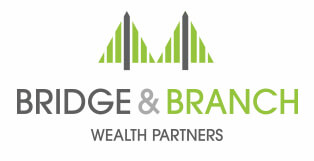As you approach retirement, many important decisions await you. If you have a qualified employer-sponsored retirement plan, whether it is a traditional pension or defined contribution plan, such as a 401(k), you will have to decide how to manage the plan’s proceeds once you retire. Your choice may depend on the following considerations: your current financial situation and your projected income requirements; the health and life expectancy of you and your spouse; the anticipated inflation rate; and federal and state taxes.
Pension Payout Options
If you have a company pension plan, you will need to make some decisions about how you wish to receive your pension proceeds when you retire. Generally, you will be given the choice between receiving an income for the rest of your life (single life option), receiving an income for the life of you and your spouse (joint and survivorship option), or receiving a lump-sum distribution.
Each option has potential advantages and disadvantages. For instance, a single life option may pay a higher income than a joint and survivorship option. However, if you take the single payout option, income will cease upon your death, but with the joint and survivorship option, payments continue for the life of both you and your spouse. With both payout options, you exchange your pension balance for periodic payments.
If you prefer to maintain control over your pension assets during retirement, you might consider taking a lump-sum distribution. You can choose to receive the pension proceeds net of income taxes or roll them over into a traditional Individual Retirement Account (IRA), where they can continue to grow on a tax-deferred basis. Either choice with the lump-sum distribution allows you to actively manage your own retirement assets.
Defined Contribution Plan Proceeds
If you are a participant in an employer-sponsored defined contribution plan, such as a 401(k), you must begin taking required minimum distributions (RMDs) by age 72. Depending on the rules of your company plan, you may also have the option of taking a lump-sum withdrawal net of income taxes or rolling over the proceeds into an IRA. Either of these options requires you to actively manage your retirement assets, and there may be tax consequences. Be sure to consult with a tax professional for guidance to help you develop savings goals consistent with your objectives.
Shortfall Planning
For many individuals, retirement plan assets and Social Security alone will not meet retirement income needs. Therefore, personal savings are important to long-term success. Before you begin your personal savings program, you may want to consider maximizing your allowable contributions to a tax-advantaged, employer-sponsored retirement plan.
Since there are a number of choices available and decisions to be made regarding the funding and distribution of your retirement income, it is important to regularly re-evaluate your financial strategies for reaching your goals. If you need help deciding which strategies are most suitable for your unique circumstances, speak to a financial professional for guidance. Remember, it’s never too early to start saving for tomorrow.
Important Disclosures
The opinions voiced in this material are for general information only and are not intended to provide specific advice or recommendations for any individual security. To determine which investment(s) may be appropriate for you, consult your financial professional prior to investing.
Contributions to a traditional IRA may be tax deductible in the contribution year, with current income tax due at withdrawal. Withdrawals prior to age 59 ½ may result in a 10% IRS penalty tax in addition to current income tax.
This information is not intended to be a substitute for specific individualized tax advice. We suggest that you discuss your specific tax issues with a qualified tax advisor.
This article was prepared by Liberty Publishing, Inc.
LPL Tracking #1-05255318

